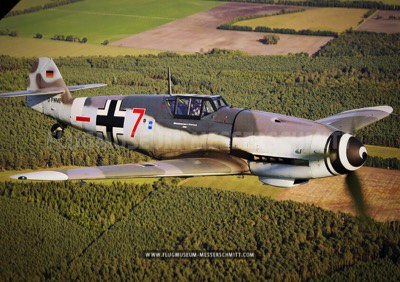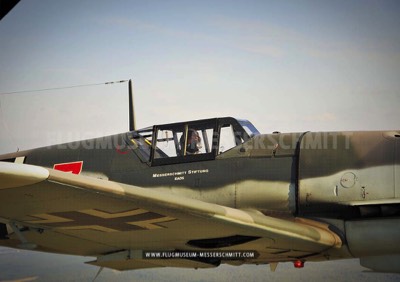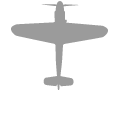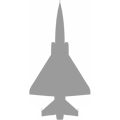SERVICE HISTORY TABLE
MESSERSCHMITT Bf (Me) 109 G-4 ‘RED SEVEN’
1950
Year of construction?
16 October 1958
Allocated to the 71st Squadron.
24 October 1958
Arrived at the 71st Squadron.
1 April 1965
471st Squadron.
18 October 1965
Acquired by Maestranza Aérea de Sevilla.
12 December 1965
Decommissioned after 216 hours and 50 minutes of actual flight time at the Tablada AFB airbase. Sold to the UK with tail number G-AWHG.
July 1966
Bought by Battle of Britain Movie Production. Modified to look like a Bf 109 E4.
14 May 1968
Flew as ‘Yellow 11’ and ‘Red 14’ in the film ‘Battle of Britain’ film.
January 1969
Aircraft damaged during take-off from Le Havre.
1974
Aircraft sold to a buyer in the USA and restored as a Buchon. Tail number N3109G.
28 May 1986
Aircraft had an accident during a test flight in Casper, Wyoming, and was restored as a Bf109 ‘lookalike’.
1994/ 95
Aircraft sold to a buyer in France. The fuselage was later taken to Bitz Flugzeugbau in Augsburg, Germany, while the wings remained in France.
October 1997
Aircraft purchased by MAC (Messerschmitt Air Company) in Albstadt, Germany. Over the years that followed, the aircraft was restored from scratch and made airworthy by Dieter Beck, Werner Grammel, Wilhelm Heinz and Siegfried Knoll.
23 August 2004
Another maiden flight as the Bf 109 G4, flown by Walter Eichhorn.
16 July 2005
Aircraft suffered serious damage while landing at Albstadt-Degerfeld airfield. The pilot Siegfried Knoll was unhurt. MAC carried out a total of 103 flights with an overall flying time of 32 hours.
2007
The owners at the time sold the aircraft to EADS.
13 April 2008
Maiden flight after restoration by MAC.
15 April 2008
During the second flight after restoration, the aircraft suffered a belly landing in Manching following problems with the landing gear.
19 February 2009
Another maiden flight following repairs in Manching.
18 August 2013
Belly landing during display in Roskilde in Denmark.
27 August 2016
Banked during take off in Manching, resulting in serious damage.
FACTS AND FIGURES
MESSERSCHMITT Bf (Me) 109 G-4 ‘RED SEVEN’
Owner
Airbus
Holder and operator
Airbus
Tail number
D-FWME
Serial number
139 with tail number C.4K-75; built as HA 1112 M1L in Spain
Year of construction
before 1958 (probable date)
Length
8,94 m
Wingspan
9,92 m
Height
2.50 m (excluding propeller)
Take-off weight
3.100 kg
Speed
650 km/h
Engine
DB 605 A
Power
1,085 kW (1,475 HP)
First flight
28 May 1935
Modern avionics were used to upgrade the cockpit, both to improve flight safety and to comply with the present-day requirements for air traffic.
GALLERY
MESSERSCHMITT Bf (Me) 109 G-4 ‘RED SEVEN’
-

Me 109 G4 ‘RED SEVEN’
-

Me 109 G4 ‘RED SEVEN’
-

Me 109 G4 ‘RED SEVEN’
-

Me 109 G4 ‘RED SEVEN’
-

Me 109 G4 ‘RED SEVEN’
-

Me 109 G4 ‘RED SEVEN’
EXHIBITS
QUICK ACCESS TO MESSERSCHMITT EXHIBITS
© FLUGMUSEUM MESSERSCHMITT





















